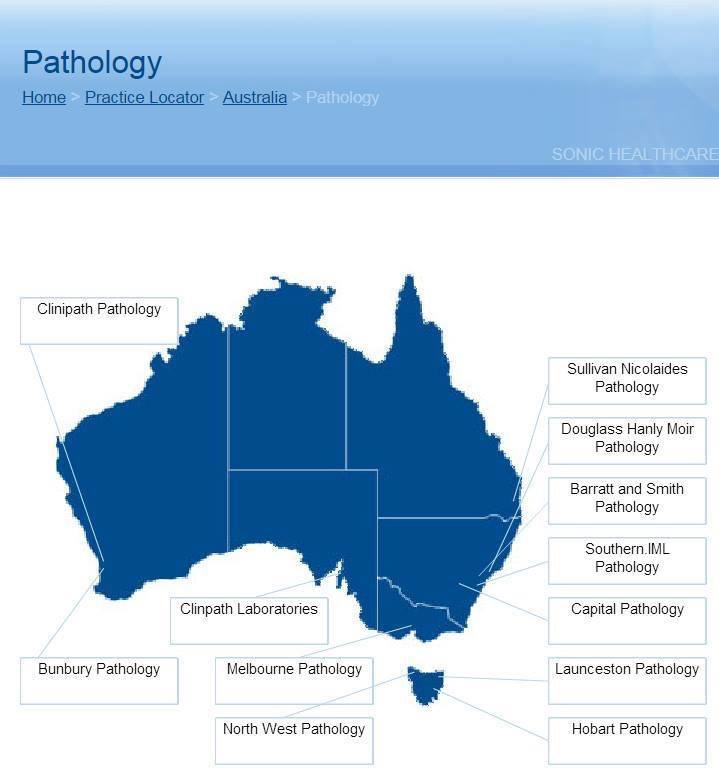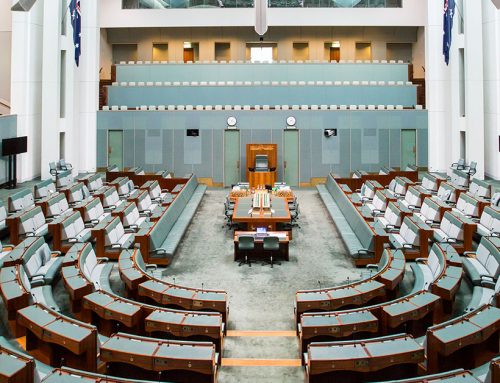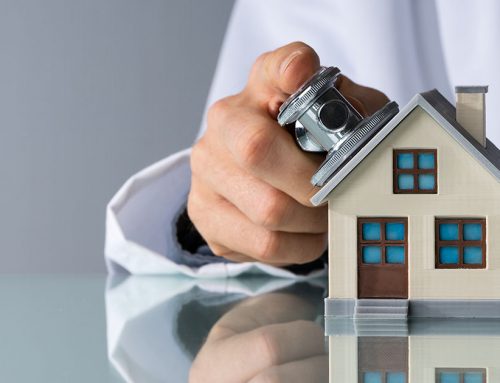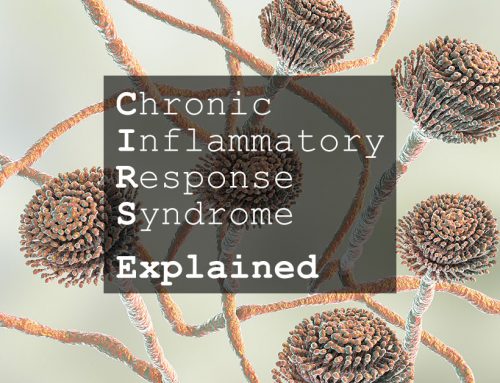Update: This page also has an accompanying Google sheet
CIRS/Mould Illness Biomarkers
- Visual contrast sensitivity (VCS) (Free or low cost)
- Blood tests (Medicare rebate-able)
- Blood tests (Out-of-pocket)
- Blood tests (Not currently available from a NATA accredited Australian lab)
- Blood tests – NutriPATH (Out-of-pocket)
- Urinary mycotoxin tests (Out-of-pocket)
- Serum mycotoxin antibodies (Out-of-pocket)
- Organic Acids Testing (OAT) (Out-of-pocket)
- Nasal swab for MARCoNS and Fungi (Out-of-pocket)
- Volumetric MRI Brain Imaging (NeuroQuant) (Partly rebate-able)
Other Biomarker Testing
- Mould allergy
- Mould infection
- Conventional medicine workup
- Functional medicine workup
- Lyme, tick-borne disease and stealth infections
What test will diagnose me with CIRS/Mould Illness?
Diagnosis should first and foremost be made by a CIRS/mould-aware health practitioner looking at a patient’s symptoms and diagnoses, health history, and environmental history in conjunction with biomarker testing. No one test, or even a panel, can diagnose CIRS with 100% accuracy.
How many of the tests below need to be abnormal for a CIRS diagnosis?
Short answer
In 2003 Dr. Shoemaker said at least 3 of 6 of biomarkers (known at that time) if symptom and environmental criteria were met. Speaking on the Low Tox Life podcast (#55, 50m02s) Dr. Sandeep Gupta said “Once you have around 3 abnormal markers, that should be sufficient.”
Other doctors will diagnose on other testing such as a positive urinary mycotoxin test. Whether this means the patients has CIRS, mycotoxicosis or mycotoxins coming from a normal diet is matter of some debate.
Long answer
From Dr. Shoemaker’s original Sick Building Syndrome (SBS) criteria from 2003 (note, this was before the discovery of C4a and TGF-b1 being elevated, and VIP being lowered, in CIRS):
1. We propose that a definition of a case of SBS include each of the following elements
– potential for exposure to buildings with a documented toxigenic fungi, evident fungal growth or a history of water intrusion with musty smells;
– presence of multiple symptoms in at least 4 of 8 system categories
– absence of confounders
2. At least 3 of the following 6
– VCS deficits
– MSH deficiency
– MMP9 elevation
– HLA genotype
– ADH/osmolarity dysregulation
– ACTH/cortisol dysregulation
3. Final criteria for case management
– Response to CSM, with abatement of symptoms and resolution of VCS deficit to control levels
– Reduction of leptin, if elevated, with treatment
– Reduction of MMP9, if elevated, with treatment
4. Clinical note needs to be made of
– Presence of MARCoNS in deep nasal spaces
– Elevated levels of myelin basic protein antibodies”
From a more recent (2020) paper:
…The difference is that CIRS literature has data on many recognized biomarkers and a published treatment protocol [7], but PICS does not. These biomarkers include symptom clusters for CIRS acquired following environmental exposures to biotoxins and inflammagens in water-damaged buildings (WDB), finding at least 8 of 13 clusters present.
Proteomic biomarkers compared to controls [4] include
(i) increased relative risk for specific HLA haplotypes;
(ii) presence of a distinctive deficit seen in visual contrast sensitivity (VCS);
(iii) reduction of mean levels of melanocyte-stimulating hormone (MSH);
(iv) dysregulation of ACTH to cortisol and
(v) ADH to osmolality;
(vi) elevated C4a,
(vii) TGF beta-1, and
(viii) MMP9;
(ix) suppression of vascular endothelial growth factor (VEGF);
(x) increased incidence of antigliadin and
(xi) anticardiolipin antibodies [7].
Functional CIRS WDB biomarkers include
(a) a distinctive “fingerprint” of volumetric abnormalities [22-24] seen on NeuroQuant™;
(b) reduction of VO2 max and
(c) anaerobic threshold shown by pulmonary stress testing;
(d) elevated pulmonary artery pressures at rest, or (e) after exercise on echocardiogram;
(f) transcriptomics.
Tests 1-5 are the classic Dr. Shoemaker CIRS biomarkers for screening and diagnosis of CIRS. These show inflammation, hormone imbalance or antibodies caused by biotoxins rather than mould or mycotoxins directly.
1. Visual Contrast Sensitivity (VCS) (Free or low cost)
A contrast sensitivity test measures your ability to distinguish between finer and finer increments of light versus dark (contrast). Inflammation from CIRS can cause loss of this contrast sensitivity. Dr. Shoemaker claims an accuracy of 92% (8% false negatives, 2% false positives) for the handheld kit, which is the gold standard. Accuracy of the online versions has never been formally studied but, anecdotally, practitioners find it less that those numbers. TMSA advises to try both the Surviving Mold ($15 USD) and VCSTest (free or contribution) and stick with the test that you find most accurate, usually the one where you get more fails.
Surviving Mold
VCSTest.com
2. Blood tests (Medicare rebate-able)
The following are blood tests with Medicare item numbers. To have these bulk billed will depend on the willingness of your physician to tick the direct bill (DB) box on a test requisition form. VIP and Leptin are the only two tests that fasting is required.
HLA DR/DQ Gene Test
The HLA DR/DQ gene test show haplotypes (gene combinations) of susceptibility to CIRS-WDB/mould illness, Post Lyme Syndrome (PLS) and multi-susceptible (susceptibility to mould, PLS and dinoflagellates/ciguatera/toxic algae).
Having a HLA positive does not mean you have CIRS or are destined to develop CIRS but you may be more susceptible to develop it after sufficient exposure to damp and water-damaged buildings or other biotoxin exposures.
 Correct laboratory group — Sonic Pathology
Correct laboratory group — Sonic Pathology
Sonic Pathology Australia are a network of pathology laboratories in every Australian state. See their website or the picture on the right (or above) for locations in your state.
Test information: HLA Panel Screen (DR and DQ)
Test name: Ask the GP to request “HLA DR-DQ typing” — Do NOT write coeliac
Medicare rebate
It can be fully or partly Medicare rebateable depending on your practitioner and laboratory. Medicare item number 71151. No rebate is available via NutriPATH.
Price varies from lab to lab but ranges from $119 to $180.
NutriPATH
NutriPATH do report the HLA DR/DQ test in the correct format also.
Test name: HLA DQ/DR Genetic Studies
Test number: 3401
Test cost: $180
Interpretation
Interpretation can be done by a CIRS-aware health professional or via the HLA calculator. If you are still unsure please post your results in the TMSA Facebook group.
Vasoactive Intestinal Polypeptide (VIP)
FASTING TEST
What it Is: VIP is produced in many tissues including the gut, pancreas, and suprachiasmatic nuclei of the hypothalamus in the brain. VIP stimulates contractility in the heart, causes vasodilation, increases glycogenolysis, lowers arterial blood pressure and relaxes the smooth muscle of trachea, stomach and gallbladder.
Significance in CIRS: VIP is often, but not always, low in CIRS. Low levels can lead to inflammation, immune dysregulation, post-exertional malaise/exercise intolerance and, according to Dr. Shoemaker, multiple chemical sensitivity (MCS). Replacement via VIP nasal spray is the last step in CIRS therapy.
Collection: Most Australian pathology labs can collect and send to Royal Prince Alfred/Sydney Southwest Pathology. A special collection tube is required and will usually have to be ordered in before the blood draw. Consult with your local path lab to arrange. VIP collection and information page.
Medicare: Medicare item number 66695.
Normal Range: 6.81-18.65 pmol/L (23-63 pg/mL, conversion ref).
Osmolality (serum)
About: Serum (or plasma) osmolality measures the body’s electrolyte–water balance.
Significance in CIRS: Dr. Shoemaker has found 60% of biotoxin illness patients have dysregulated ADH/osmolality — seen as low ADH with high serum osmolality. Such patients have excessive thirst and may need to urinate every 30 minutes, or more, due to low ADH causing an inability to retain the water that has been drunk. As the salt level in blood rises, due to the lack of free water, some salt is released on the skin creating a battery like effect leading to frequent static shocks. Additionally migraine-like headaches due to dehydration may occur.
Notes: This should be drawn at the same time as Copeptin (see below).
Medicare: Medicare item number 66563.
Normal Range: 280-295-297 mmol/kg.
Testosterone & Oestradiol
What it Is: Testosterone is often low while Oestradiol is often elevated in CIRS due to upregulation of the aromatase enzyme. Testosterone replacement is not generally recommended in CIRS as it will just convert to Oestradiol.
ACTH & Cortisol AM
What it Is: Adrenocorticotropic Hormone (ACTH) is a hormone made by the pituitary gland and controls the production of another hormone called cortisol. Cortisol is made by the adrenal glands, two small glands located above the kidneys and helps to respond to stress among other functions.
Significance in CIRS: ACTH and cortisol are often high early in the disease while later they may drop to low-normal or below normal levels. Ideally measure these in blood, as opposed to saliva or urine, in the morning.
DHEA
What it Is: Dehydroepiandrosterone (DHEA) is a hormone that your body naturally produces in the adrenal gland. DHEA helps produce other hormones, including testosterone and estrogen. Natural DHEA levels peak in early adulthood and then slowly fall as you age.
Significance in CIRS: DHEA is often low in CIRS. Ideally test blood levels of DHEA-sulphate (DHEA-S).
Antigliadin antibodies IgA/IgG
Significance in CIRS: Sometimes elevated in CIRS due to low MSH and not coeliac disease.
Normal Range: 0-19
Cardiolipin antibodies IgA/IgG/IgM
What it Is: Cardiolipin antibodies are autoantibodies produced by the immune system that mistakenly target the body’s own cardiolipins, substances found in the outermost layer of cells (cell membranes) and platelets. These autoantibodies can affect the body’s ability to regulate blood clotting.
Significance in CIRS: These are sometimes elevated in CIRS due to its dysregulation of the immune system.
Normal Range: IgA – 0-12; IgG 0-10; IgM 0-9
Private ordering (no doctor referral)
iMedical allow patients to
build their own blood tests with no doctor’s referral needed.
- $19 – base fee
- $39 – VIP
- $33 – ACTH
- $29 – Cortisol
- $29 – Osmolality (Serum)
- $29 – DHEA-S
- $52 – Testosterone Free/Total + SHBG
- $29 – Antigliadin antibodies
- $86 – Antiphospholipid antibodies
Note: The HLA DR/DQ test is not available via iMedical.
3. Blood tests (Out-of-pocket)
Leptin
FASTING TEST
What it Is: Leptin is an adipokine, a cytokine released by adipose (fat) tissue. High levels can lead to persistent weight gain that is unresponsive to diet and lifestyle interventions.
Significance in CIRS: It is frequently, but not always, elevated in cases of CIRS. It is hypothesised by Dr. Shoemaker that inflammatory cytokines damage the leptin receptor in the hypothalamus thus not allowing leptin to dock and instead recirculate.
Collection: Most Australian pathology labs can collect and send to Royal Prince Alfred/Sydney Southwest Pathology, but total cost (collection plus test) varies from lab to lab. Prices for collection vary so check with your local pathology centres for the best price. In Queensland QML are the cheapest ($60). Leptin collection and information page from SSWP.
Dr. Shoemaker’s normal range: Depends on age, sex and BMI. Dr. Shoemaker gives the following normal range: Male: 0.5-13.8 ng/mL; Female: 1.1-27.5 ng/mL.
Copeptin (was ADH)
INTERPRET WITH SERUM OSMOLALITY (SAME DRAW)
What it Is: Antidiuretic Hormone (ADH) or vasopressin is a neuroimmune peptide hormone made by the hypothalamus in the brain and stored in the posterior pituitary gland. It tells your kidneys how much water to conserve. ADH constantly regulates and balances the amount of water in your blood.
Significance in CIRS: Dr. Shoemaker has found 60% of biotoxin illness patients have dysregulated ADH/osmolality — low ADH with high serum osmolality. Such patients have excessive thirst and may need to urinate every 30 minutes, or more, due to low ADH causing an inability to retain the water that has been drunk. As the salt level in blood rises, due to the lack of free water, some salt is released on the skin creating a battery like effect leading to frequent static shocks. Additionally migraine-like headaches due to dehydration may occur.
Notes: Most labs including the one below now offer the precursor C-Terminal Pro Arginine Vasopressin (copeptin) as a marker which has 1:1 compatibility with ADH.
Collection: Most Australian pathology labs can collect and send to Royal Prince Alfred Hospital via Sydney Southwest Pathology. Prices for collection vary so check with your local pathology centres for the best price. Copeptin collection and information page.
Dr. Shoemaker normal range: 1.0-13.3 pg/ml.
RPA normal range: < 15.2 pmol/L (fasting) < 16.3 pmol/L (non-fasting), < 14.5 pmol/L (non-fasting paediatric)
Quest (US) normal range: < 14 pmol/L
VEGF
What it Is: Vascular Endothelial Growth Factor (VEGF) is a protein produced by many cells that stimulates the formation of blood vessels.
Significance in CIRS: VEGF can be low, normal, or high in CIRS patients. Low levels may be due to increased TGF-b1 levels, and contribute to capillary hypoperfusion, causing symptoms such as fatigue, muscle cramps, and shortness of breath due to mitochondrial dysfunction.
Significance in other diseases: High levels are seen in bronchial asthma, diabetes mellitus, some cancers and Bartonella infection.
Collection: Most Australian pathology labs can collect and send to Peter MacCallum Cancer Centre, Royal Melbourne Hospital. Prices for collection vary so check with your local pathology centres for the best price. In Queensland the cost is $200, via QML.
Dr. Shoemaker/Quest (US) normal range: 31-86 pg/mL
Private ordering (no doctor referral)
iMedical allow patients to
build their own blood tests with no doctor’s referral needed.
- $19 – base fee
- $98 – Copeptin
- $76 – Leptin
4. Blood tests (Not currently available from a NATA accredited Australian lab)
TGF-b1, C4a, MMP-9, MSH
Many of Dr. Shoemaker’s core CIRS tests — the inflammatory markers Transforming Growth Factor Beta-1 (TGF-b1), Complement C4a (C4a), and Matrix Metalloproteinase 9 (MMP-9), plus the protective neuropeptide hormone alpha-Melanocyte Stimulating Hormone (MSH) — are not currently available via any NATA accredited Australian laboratories.
More details on these tests, including normal ranges, can be found on Surviving Mold’s Lab Tests for Mold Illness.
GENIE
The
GENIE transcriptomic test looks at the RNA expression of 215 genes, developed by Dr. Shoemaker and Jimmy Ryan, PhD to diagnose, track, and enable subtyping of, CIRS. It is only available in Australia via
Mycotox at present.
5. Blood tests — NutriPATH (Out-of-pocket)
NutriPATH’s blood tests and biotoxin/mould panel (apart from HLA DR/DQ and MARCoNS) cannot be recommended at this time due to inaccuracies compared to Quest Diagnostics. Ref: Mold Illness in Children webinar (35m) and Low Tox Life #55 (39m22s).
Tests 6-8 are not endorsed by Dr. Shoemaker for CIRS diagnosis but are used many health practitioners in the mould illness realm
6. Urinary Mycotoxin tests (Out-of-pocket)
Urinary mycotoxin testing has proven an increasingly popular biomarker test in mould illness. There are three main laboratories in the US doing this testing; Great Plains Laboratory (GPL), Realtime Labs (RTL) and Vibrant. The first two are available in Australia.
Great Plains
MycoTOX Profile [
info page]
Australian distributor:
RN Labs
Cost: AUD$515 (+ $20 postage)
Client ordering: Yes, but the results will be sent to one of RN Lab’s listed health practitioners.
Mycotoxins tested: Aflatoxin M1, Ochratoxin A, Sterigmatocystin, Zearalenone, Roridin E, Verrucarin A, Enniatin B, Gliotoxin, Mycophenolic acid, Citrinin, Chaetoglobosin A
RealTime Labs
Mycotoxin Testing [
info page]
Australian distributor: NutriPATH
Cost:
Initial #3413 AUD$630 /
Review #3414 $350 /
Extensive #3419 AUD$770
Client ordering: Maybe, contact NutriPATH for details.
Mycotoxins tested: Aflatoxin group, Trichothecene group, Ochratoxin A, Gliotoxin derivative (extensive only)
Science supporting urinary mycotoxin testing
Data on mycotoxins due to inhalation or colonization:
- Brewer, J., Thrasher, J. & Hooper, D. (2013). Chronic illness associated with mold and mycotoxins: is naso-sinus fungal biofilm the culprit? Toxins, 24, 6(1), 66-80. doi: 10.3390/toxins6010066 PMID 24368325
- Brewer, J., Thrasher, J., Straus, D., Madison, R. & Hooper, D. (2013). Detection of mycotoxins in patients with chronic fatigue syndrome. Toxins, 11, 5(4), 605-17. doi: 10.3390/toxins5040605 PMID 23580077
- Brewer, J., Hooper, D. & Muralidhar, S. (2015). Intranasal antifungal therapy in patients with chronic illness associated with mold and mycotoxins: an observational analysis. Global journal of medical research: K interdisciplinary, 15(1). PDF
- Hooper, D., Bolton, V., Guilford, F., & Straus, D. (2009). Mycotoxin Detection in Human Samples from Patients Exposed to Environmental Molds. International Journal of Molecular Sciences, 10(4), 1465–1475. MDPI AG. http://doi.org/10.3390/ijms10041465
- Shaw, W. & Pratt-Hyatt, M. (2019). Biochemical Markers in the Urine Associated with Gastrointestinal Mold-Overgrowth Are Linked with Elevated Urinary Mycotoxins in Patients with Suspected Mold Illness. Townsend Letter, 436.
Dr. Shoemaker's view
Dr. Shoemaker’s perspective from 2019:
Even if we are presented with impeccable lab results from ELISA and thorough use of standard differential diagnosis (we aren’t), based on world-wide control data, and a robust literature on CIRS, there is no basis to ascribe any diagnostic significance to urine mycotoxin testing. ref
7. Serum Mycotoxin antibodies (Out-of-pocket)
myMycolab
Serum antibody testing for mycotoxins [
FAQ page]
Cost: USD$380
Client ordering: Yes. Have to arrange shipping via FedEx.
Info: Dr. Andrew Campbell’s laboratory in Florida, US performs serum IgE and IgG mycotoxin antibody testing for 12 different mycotoxins (24 results when combined). From the FAQ:
IgG antibodies to mycotoxins indicate that currently the immune system is reacting to mycotoxins. It is not an indicator of past exposure. IgG to a toxin such as mycotoxins, mercury, pesticides is current exposure; IgG to viruses, bacteria, molds, and parasite is an indication of past exposure. IgE is an indication that mycotoxins are stimulating mast cells, causing an inflammatory reaction and can result in Mast Cell Activation Syndrome (MCAS).
Science supporting serum mycotoxin antibody testing
- Vojdani et al. (2003). Saliva secretory IgA antibodies against molds and mycotoxins in patients exposed to toxigenic fungi. Immunopharmacol Immunotoxicol. 25(4):595-614. https://doi.org/10.1081/iph-120026444
- Vojdani et al. (2003). Antibodies against molds and mycotoxins following exposure to toxigenic fungi in a water-damaged building. Arch Environ Health. 58(6):324-36. PMID 14992307
- Campbell et al. (2003). Neural autoantibodies and neurophysiologic abnormalities in patients exposed to molds in water-damaged buildings. Arch Environ Health, 58(8):464-74. https://doi.org/10.3200/aeoh.58.8.464-474
- Brasel et al. (2004). Detection of trichothecene mycotoxins in sera from individuals exposed to Stachybotrys chartarum in indoor environments. Arch Environ Health, 59(6):317-23. https://doi.org/10.3200/aeoh.58.6.317-323
- Campbell et al. (2004). Mold and mycotoxins: effects on the neurological and immune systems in humans. Adv Appl Microbiol, 55:375-406. https://doi.org/10.1016/s0065-2164(04)55015-3
8. Organic Acids Testing (OAT) (Out-of-pocket)
An OAT can show a number of markers of fungal and bacterial GI overgrowth (dysbiosis), glutathione status, oxalate status, vitamin B status and metabolism.
Great Plains
Organic Acids Test (OAT) [
Great Plains]
Organic acids are chemical compounds excreted in the urine of mammals that are products of metabolism. The Organic Acids Test (OAT) offers a comprehensive metabolic snapshot of a patient’s overall health with 76 markers. When elevated, markers 1-9 can indicate yeast and fungal overgrowth (dysbiosis) in the GI tract. Elevations of markers 10-18 can indicate bacterial overgrowth.
Australian distributor: RN Labs
Cost: AUD $359 (+$20 shipping)
Client ordering: Yes, but the results will be sent to one of RN Lab’s listed health practitioners.
Genova
Organic Acids – Metabolic Profile [
Genova Diagnostics]
The Organic Acids test (formerly Metabolic Analysis Profile) is a nutrition test that requires a first morning void (FMV) urine collection to measure organic acids. The report includes personalized micronutrient recommendations for vitamin and mineral cofactors as well as digestive support recommendations based on a patient’s individual biochemical metabolism.
Australian distributor: NutriPATH
Cost: AUD $375 (+ shipping) [#4016]
(Note: there is also organic acids available via Genvoa’s NutrEval, CardioION and ION Profiles. The ORGANIX profile doesn’t seem to have the same fungal markers.)
Client ordering: Contact NutriPATH.
Tests 9-10 are endorsed by Dr. Shoemaker for aiding in diagnosis and tracking of treatment
9. Nasal Swab for MARCoNS and Fungi (Out-of-pocket)
Multiple Antibiotic Resistant Coagulase Negative Staphylococci are organisms that colonise in the nasal areas due to low MSH. They produce toxins and deplete MSH further.
Microbiology Dx (USA)NutriPATH (Aus)
Microbiology DX
19A Crosby Drive
Bedford MA 01730, USA
P: +1 (781) 265 4956
W:
microbiologydx.com
Ordering: Microbiology DX will FedEx collection kits free worldwide, visit the Order Kits page (add Australia to the “City, State, Zip” field) . You don’t have to use FedEx to send the sample back, simple Australia Post Airmail letter ($2.75) is usually fine. Requisition form (PDF).
Add on tests including a biofilm test which will rate the strength of the biofilm from 0 to +3 (only done if MARCoNS is present) and a fungal culture test.
Instructions: Nasopharyngeal Culture Collection Procedure
Costs
MARCoNS/bacterial culture: USD $85 (main one to get)
Fungal culture: USD$80
Biofilm analysis: USD$100
Melbourne based NutriPATH can also be used.
Test name: MARCoNS culture
Test code: 3404
Cost: AUD$150
Test name: MARCoNS & Fungal culture
Test code: 3418
Cost: AUD$300
10. Volumetric MRI Brain Imaging (NeuroQuant) (Partly rebate-able)
NeuroQuant by Cortech Labs is a software program that can map brain regions for microscopic changes via an MRI scan. NeuroQuant is not used for diagnosis per se but more for tracking neuroinflammatory and atrophic changes.
Sunshine CoastSydneyMelbournePerthNZMedicareInterpretation
X-ray & Imaging Maroochydore
49 Baden Powell Street
Maroochydore QLD 4558
P: 07 5409 2800
www.xrayimaging.com.au
Note: Primarily only for the patients of Doctors Sandeep Gupta and Georgina Hale.
St Vincent’s Hospital
Level 3, Xavier Building
360 Victoria Street
Darlinghurst NSW 2010
P: 02 8382 3495
svhm.org.au
I-Med Network Radiology
Suite 3, Level 1
38B Albert Ave
Chatswood NSW 2067
P: 02 8440 3100
i-med.com.au
Not available at present
Auckland Radiology Group
101 Remuera Road
Auckland
New Zealand
P: 09 529 4850
W:
arg.co.nz
The MRI portion can be covered by Medicare if you fulfil the criteria for “unexplained seizure(s)” or “chronic headaches with suspected intracranial pathology” item number
63551 if referred by a General Practitioner. Although this ultimately rests with the requesting practitioner.
There will usually be an additional charge for NeuroQuant processing by Cortechs labs ($200 AUD).
Surviving Mold now have an
online NeuroQuant analysis available that you can enter your General Morphology report and be given a mold and/or Lyme score and also looks at multi-nuclear atrophy, traumatic brain injury and asymmetry. Cost is $25 USD.
Other Biomarker Testing
A. Mould Allergy Testing
Mould allergy may exist in conjunction with CIRS, or it can be the sole issue.
-
- Skin prick testing – Small amounts of the mould antigen can be put on the skin to see if a welt forms. May be a mould mix or an individual fungal genus/species including: Penicillium, Cladosporim, Aspergillus, Alternaria, Tricophyton, Candida albicans, Curvulaira
- IgE RAST testing – A blood test that can test for IgE antibody reactions to similar moulds as the skin prick testing.
- Total IgE – In allergic conditions the total IgE level is often elevated.
- Eosinophils – A type of white blood cell that can also be elevated in allergic conditions.
B. Fungal Infection Testing
Mycoses or fungal infections occur when fungus from the skin or GI tract migrate into, the bloodstream or an organ causing a serious infection.
- Candida antibodies – Elevated Candida albicans antibodies can be an indicator that the yeast has migrated from the GI tract into the bloodstream, where it can cause systemic/invasive Candidiasis. Candida dysbiosis, where Candida is overgrown in the GI tract, is usually found via a stool/microbiome test and not via serum antibodies.
- Aspergillus antibodies – Elevated Aspergillus fumigatus IgG, and sometimes IgE, antibodies can indicate chronic pulmonary aspergillosis, aspergilloma or aspergillus rhinosinusitis. Elevated IgE antibodies can indicate Aspergillus allergy/sensitisation although skin prick testing is a more sensitive method.
- Culture – Both Candidiasis (via blood or tissue) and aspergillosis (via sputum or tissue) can be cultured and examined via microscopy.
C. Conventional Medicine Workup
D. Functional/Integrative Medicine Workup
E. Lyme, Tick-borne disease, stealth infection workup
References
-
- Lab tests for mold illness. n.d. SurivingMold.com
- Berry, Y. (2014). The physician’s guide to understanding and treating biotoxin illness. SurvivingMold.com. Link.
Related






You must be logged in to post a comment.